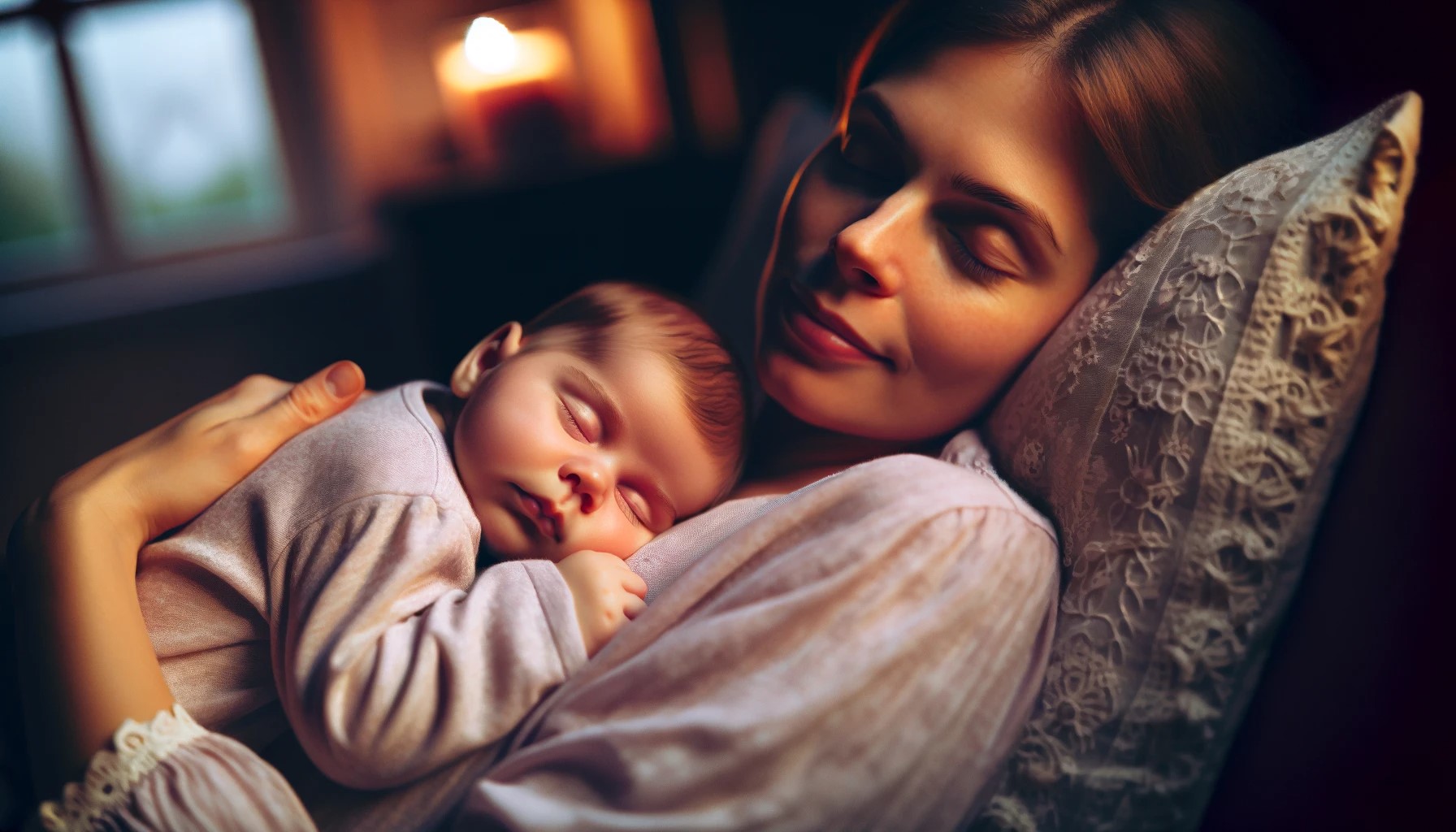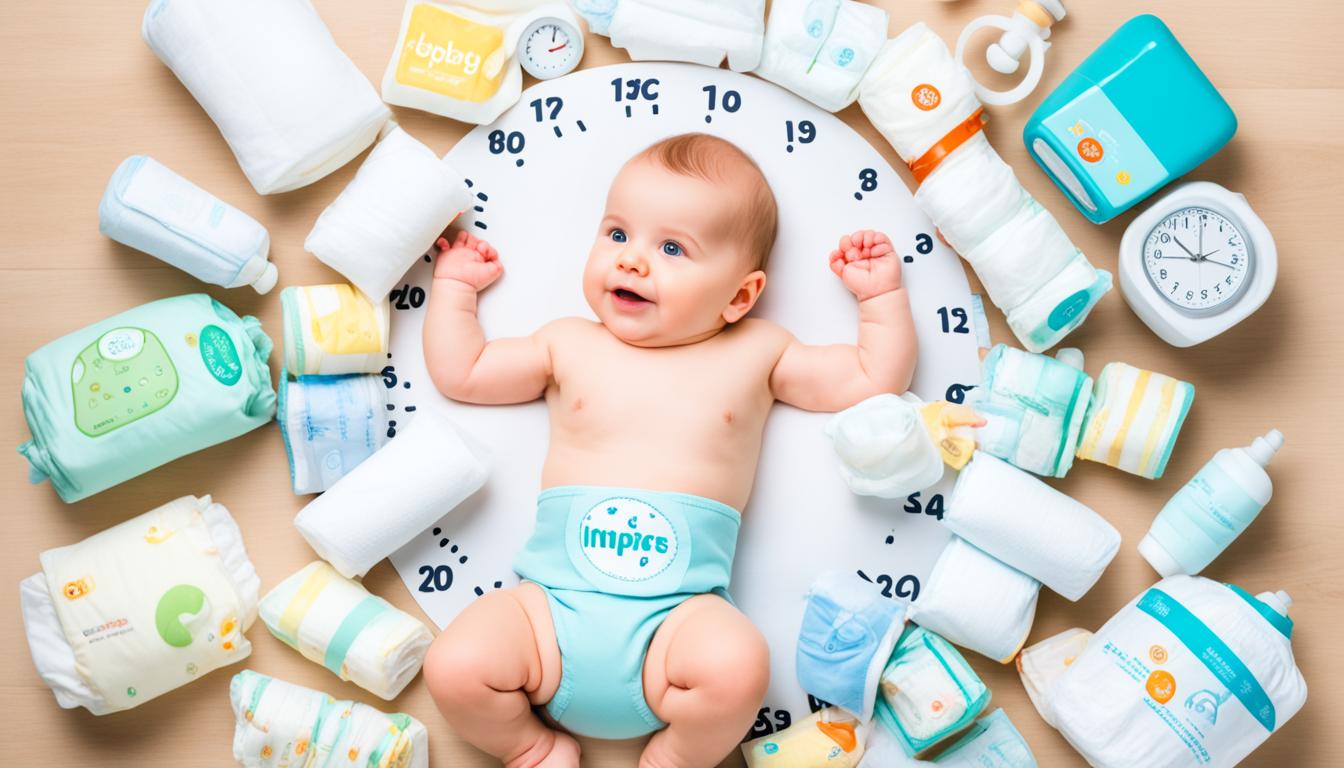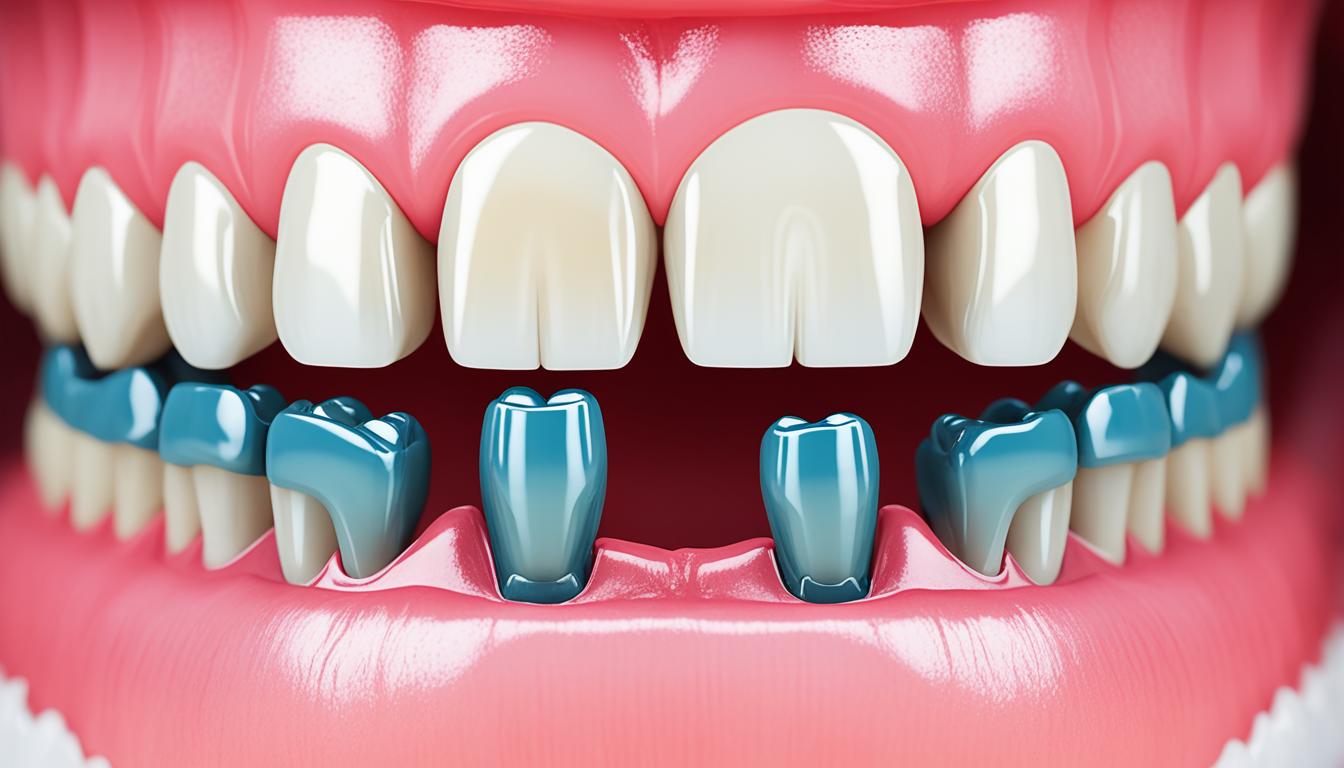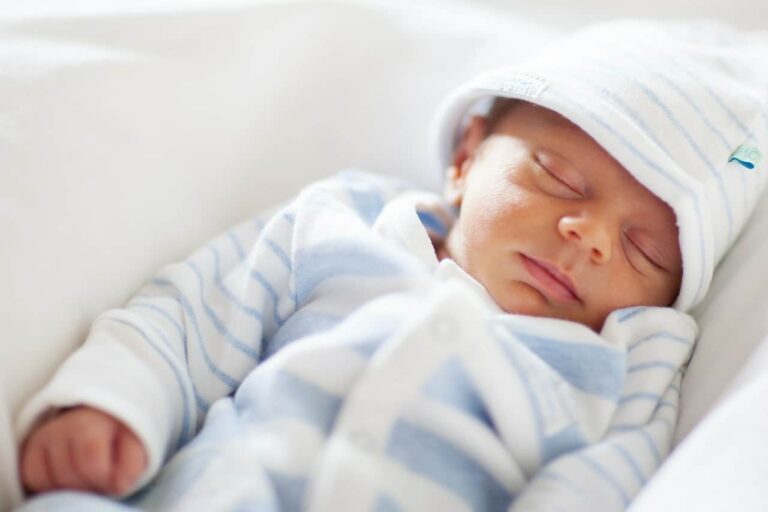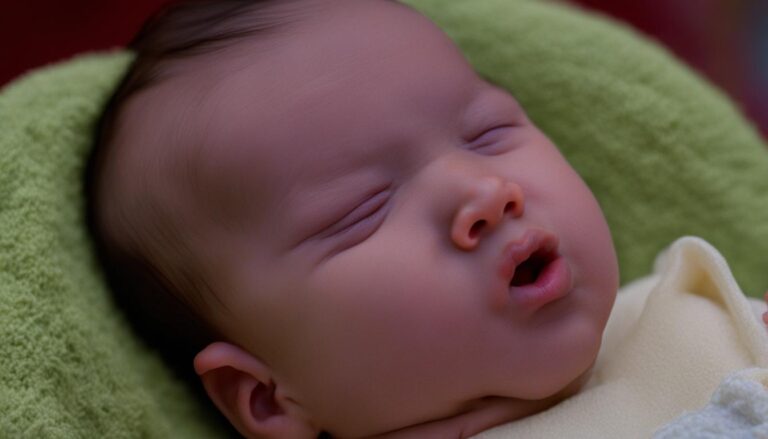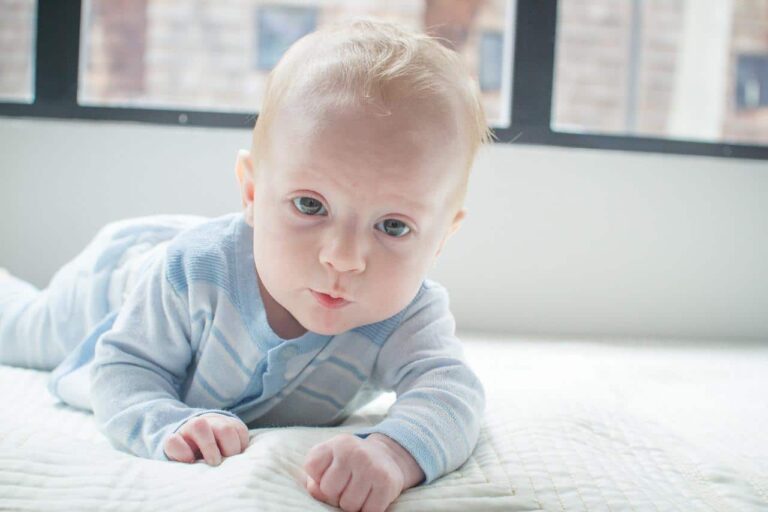Can Baby Sleep On Tummy On My Chest?
Sleeping on a parent’s chest is a common practice among many families, but is it safe for babies? According to the American Academy of Pediatrics (AAP) and reputable sources, it is generally considered safe as long as certain precautions are followed. Skin-to-skin contact and holding a baby on the chest can provide bonding and stability for the newborn, but it is crucial for me to be awake during this time. The AAP recommends that newborns sleep on a firm mattress in a safety-approved crib, covered with only a tightly fitted sheet. Babies should always be placed on their backs to sleep, especially for newborns who may not have the strength or mobility to change positions easily. The AAP advises against co-sleeping, as it increases the risk of Sudden Infant Death Syndrome (SIDS). It’s important to prioritize the safety of the baby while enjoying these cuddly moments. Consult with a pediatrician for personalized advice on safe sleeping positions for your baby.
Key Takeaways:
- Chest-sleeping with a newborn can promote bonding and emotional security.
- Follow safe sleeping guidelines for newborns, such as placing them on their backs to sleep.
- Avoid co-sleeping to reduce the risk of Sudden Infant Death Syndrome (SIDS).
- Consult with a pediatrician for personalized advice on safe sleeping positions.
- Ensure a firm mattress and a safety-approved crib for the baby’s sleep environment.
The Benefits of Chest-Sleeping
Chest-sleeping with a newborn can offer several benefits. Skin-to-skin contact and holding the baby on the chest can promote bonding and emotional security, leading to better sleep patterns, reduced crying, and overall development. It stabilizes the baby’s body temperature, blood glucose levels, and cardiorespiratory stability. Chest-sleeping also helps reduce stress and anxiety levels in parents. However, it’s important to prioritize safety and follow the recommended guidelines for safe sleep.
- Provide proper head and neck support
- Place the baby on their back
- Avoid sleeping on a couch or soft surface
Ensuring these considerations are met, chest-sleeping can be an enriching experience for both the baby and the parent. It nurtures the bond between parent and child while providing comfort and security. But remember, finding a balance between chest-sleeping and encouraging independent sleep habits is crucial for the baby’s long-term sleep health.
“Skin-to-skin contact with a parent can have profound positive effects on a baby’s well-being and development. It supports newborns in maintaining stable body temperature, heart rate, and breathing. Additionally, this practice fosters a strong emotional connection between the parent and the baby.”
Gradually introducing other comforting sleep routines alongside chest-sleeping can help the baby transition to independent sleeping while still enjoying the benefits of close contact. Consulting with a pediatrician can provide valuable insights and personalized recommendations for safe sleeping positions and techniques.
The Risks of Chest-Sleeping
While chest-sleeping can have its benefits, it is important for parents to understand and be aware of the associated risks. One significant risk is the increased threat of Sudden Infant Death Syndrome (SIDS) when a baby sleeps on a parent’s chest. The American Academy of Pediatrics strongly advises against falling asleep in this position, as it can pose serious dangers to the infant’s safety.
Placing babies on their backs to sleep is a critical precaution that parents should always follow, especially for newborns who may not have the ability to reposition themselves. Tummy sleeping, even on a parent’s chest, increases the risk of SIDS, as it restricts the baby’s airway and can lead to suffocation. To minimize the risk, it is crucial to prioritize safe co-sleeping practices and create a safe sleep environment for your baby.
In addition to tummy sleeping, co-sleeping on a couch or soft armchair is also highly discouraged. These surfaces can be hazardous for a sleeping baby and significantly increase the risk of SIDS. It is important to have a safe sleep space, such as a crib or bassinet, that meets safety standards and has a firm mattress with a tight-fitting sheet.
By consulting with a pediatrician and strictly adhering to safe sleeping practices, parents can take proactive steps to minimize the risks associated with chest-sleeping. It’s crucial to prioritize the safety and well-being of your baby, even during those tender moments of bonding and closeness.
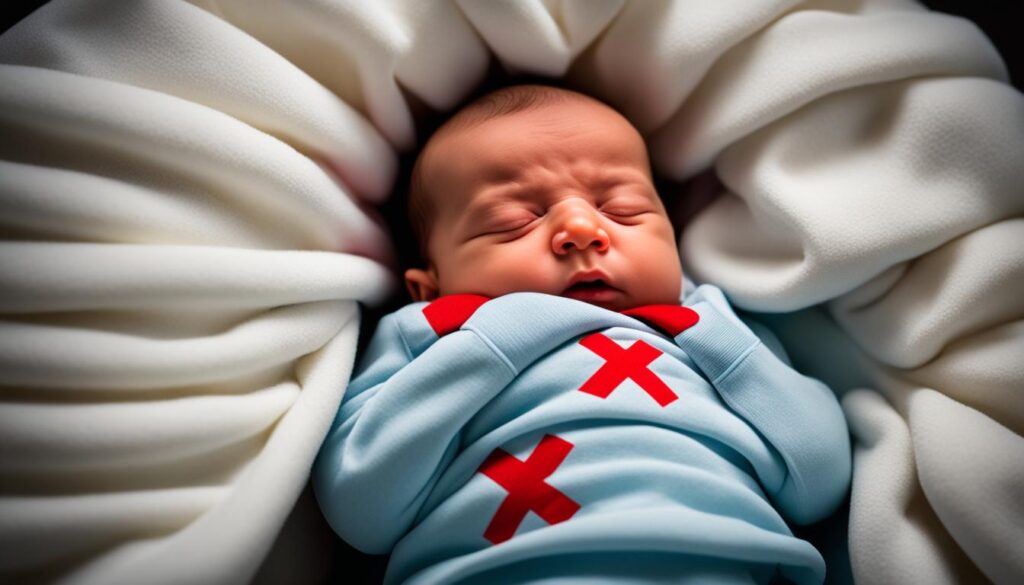
Remember, always consult with a healthcare professional or pediatrician for personalized advice and guidance on safe sleep practices for your baby.
The Best Chest-Sleeping Positions
When it comes to chest-sleeping with your baby, choosing the right position is crucial for safety and comfort. Here are the safest and most recommended chest-sleeping positions for newborns:
- Back-to-Parent Position: Lay the baby on their back, facing you, with their head turned to one side. This position helps maintain an open airway, reducing the risk of suffocation.
- Proper Head and Neck Support: Ensure that the baby’s face is not pressed against your body, and there are no blankets or pillows covering their face. Providing proper head and neck support is essential for their safety and well-being.

Skin-to-skin contact can enhance the chest-sleeping experience, promoting bonding and regulating the baby’s body temperature, heart rate, and breathing.
For an even closer connection, try removing your shirt and placing the baby directly on your bare chest. This direct skin-to-skin contact can further enhance the bonding experience and provide a sense of security for your little one.
Following safe sleeping guidelines and ensuring a safe sleep environment are crucial when it comes to chest-sleeping. By following these recommended positions and safety measures, you can create a safe and comfortable sleeping environment for your newborn.
Balancing Chest-Sleeping and Independent Sleep Habits
While chest-sleeping can provide numerous benefits for both baby and parent, it’s essential to strike a balance that promotes healthy and independent sleep habits for the baby in the long run. Limiting the frequency of chest-sleeping sessions and gradually introducing other comforting sleep routines can help create a smooth transition to independent sleeping.
“Finding the right balance is key when it comes to chest-sleeping and promoting healthy sleep habits. By gradually reducing chest-sleeping and introducing other comforting sleep routines, you can help your baby establish independence while still enjoying the bonding experience of chest-sleeping.”
As your little one grows, gradually transitioning them to their own sleep space encourages self-soothing and independent sleep. Overdependence on chest-sleeping can make it challenging to transition the baby to sleeping alone, leading to potential sleep disruptions and bedtime battles in the future.
It’s crucial to prioritize safety during sleep and follow the recommended guidelines for safe sleeping positions for babies. The American Academy of Pediatrics (AAP) advises placing babies on their backs to sleep on a firm mattress in a safety-approved crib, covered with only a tightly fitted sheet.
Introducing Safe Sleep Routines
- Establish a consistent bedtime routine that includes soothing activities, such as reading a bedtime story or singing a lullaby.
- Create a sleep environment conducive to independent sleeping by ensuring the room is dark, cool, and quiet.
- Use white noise machines or sleep sounds to help your baby relax and drown out potential environmental noises.
- Gradually introduce a transitional object, such as a small stuffed animal or blanket, as a source of comfort during sleep.
Remember, every baby is unique, and what works for one may not work for another. Consulting with a pediatrician can provide personalized guidance and recommendations based on your baby’s specific needs.
By finding the right balance between chest-sleeping and independent sleep habits, you can help your baby develop healthy sleep patterns while still enjoying the benefits of chest-sleeping.
| Sleep Recommendations for Balancing Chest-Sleeping and Independent Sleep | Pros | Cons |
|---|---|---|
| Promotes bonding and emotional security | ✓ | |
| Reduces bedtime battles and sleep disruptions | ✓ | |
| Encourages independent sleep and self-soothing | ✓ | |
| Potential challenges transitioning to independent sleep | ✓ | |
| Requires adherence to safe sleeping guidelines | ✓ |
Reassessing Bed-Sharing Recommendations
The practice of bed-sharing, including chest-sleeping, has long been a subject of controversy and conflicting advice. While some studies suggest potential benefits, such as enhanced bonding and regulation of the baby’s physiology, the American Academy of Pediatrics (AAP) emphasizes the importance of sleep safety for infants and advises against bed-sharing due to the increased risk of sleep-related deaths, including Sudden Infant Death Syndrome (SIDS).
It is worth noting that ongoing research is prompting discussions around the need to reassess bed-sharing recommendations, taking into account specific circumstances and safe sleep practices. As a parent, it’s essential to stay informed about the latest findings and guidelines from reputable sources. Consulting with a trusted pediatrician can provide personalized advice based on your baby’s unique needs and circumstances.
While the debate on bed-sharing continues, the AAP firmly recommends back sleeping for babies as the safest sleep position. Placing infants on their backs reduces the risk of SIDS significantly, especially for newborns who may lack the ability to reposition themselves comfortably. Creating a safe sleep environment, including a firm mattress and proper bedding, and following the AAP’s guidelines are crucial to ensuring the well-being and sleep safety of your little one.
Ultimately, as parents, the responsibility lies in prioritizing the sleep safety of our infants. While bed-sharing may have its potential benefits, it’s essential to balance these considerations with the established recommendations for sleep safety, including back sleeping. Assessing the latest research, consulting with medical professionals, and making informed decisions based on your baby’s individual needs are integral to creating a safe sleep environment.
FAQ
Is it safe for babies to sleep on a parent’s chest?
According to the American Academy of Pediatrics (AAP), it is generally considered safe as long as certain precautions are followed.
What are the benefits of chest-sleeping?
Chest-sleeping can promote bonding, emotional security, and overall development, as well as stabilize the baby’s body temperature and cardiorespiratory stability.
What are the risks of chest-sleeping?
The American Academy of Pediatrics warns against falling asleep while the baby is sleeping on the chest, as it increases the risk of Sudden Infant Death Syndrome (SIDS).
What are the best chest-sleeping positions for babies?
The safest and most comfortable chest-sleeping positions involve placing the baby on their back, facing the parent, with their head turned to one side.
How can I balance chest-sleeping with independent sleep habits?
Limiting chest-sleeping sessions and gradually introducing other comforting sleep routines can help create a smooth transition to independent sleeping.
Are there reassessments being made regarding bed-sharing recommendations?
Some researchers argue that the current recommendations may need to be reassessed, taking into account specific circumstances and safe sleep practices.

